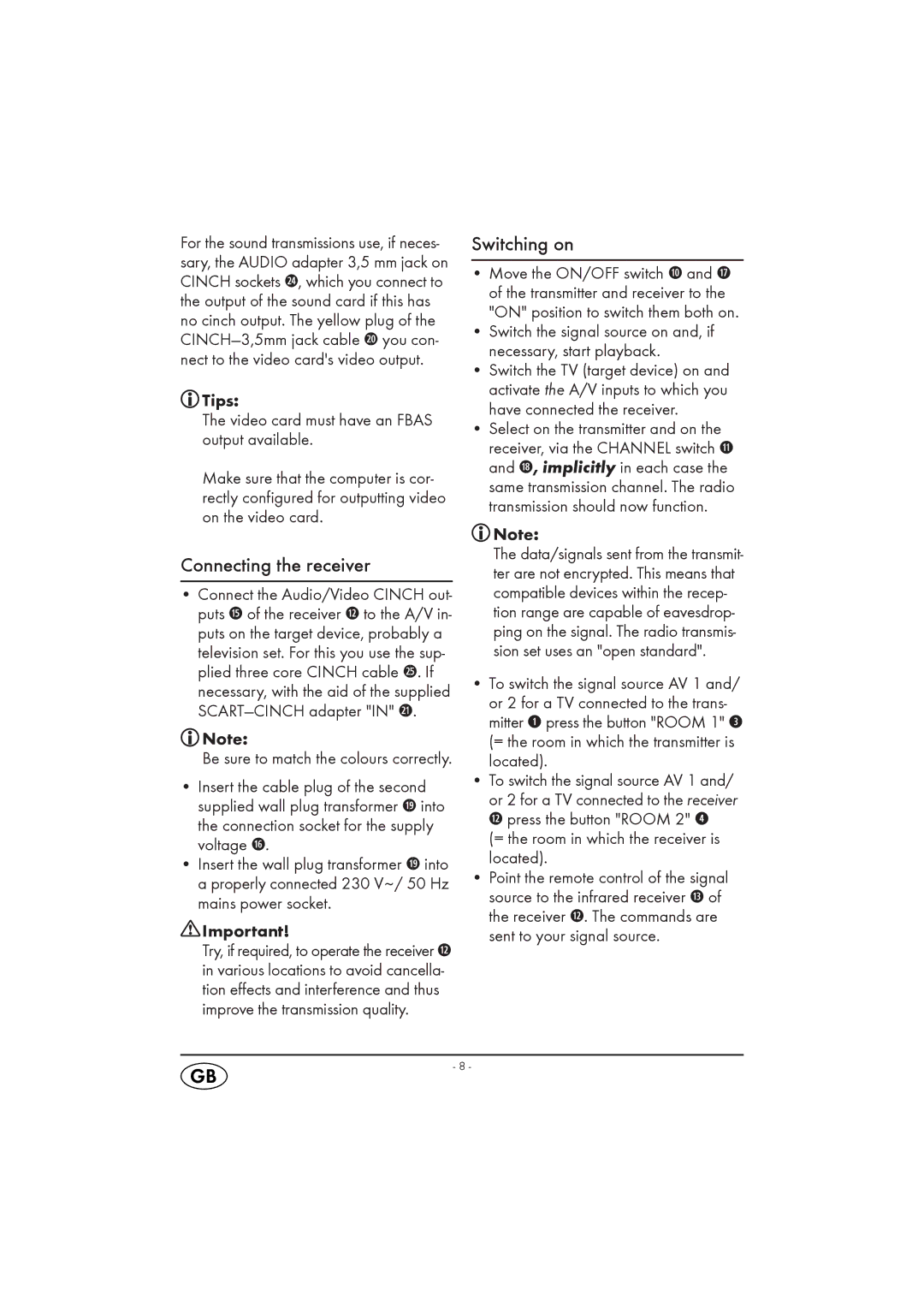
For the sound transmissions use, if neces- sary, the AUDIO adapter 3,5 mm jack on CINCH sockets 2$, which you connect to the output of the sound card if this has no cinch output. The yellow plug of the
 Tips:
Tips:
The video card must have an FBAS output available.
Make sure that the computer is cor- rectly configured for outputting video on the video card.
Connecting the receiver
•Connect the Audio/Video CINCH out- puts h of the receiver d to the A/V in- puts on the target device, probably a television set. For this you use the sup- plied three core CINCH cable 2%. If necessary, with the aid of the supplied
![]() Note:
Note:
Be sure to match the colours correctly.
•Insert the cable plug of the second supplied wall plug transformer 1( into the connection socket for the supply voltage j.
•Insert the wall plug transformer 1( into a properly connected 230 V~/ 50 Hz mains power socket.
![]() Important!
Important!
Try, if required, to operate the receiver d in various locations to avoid cancella- tion effects and interference and thus improve the transmission quality.
Switching on
•Move the ON/OFF switch a and k of the transmitter and receiver to the "ON" position to switch them both on.
•Switch the signal source on and, if necessary, start playback.
•Switch the TV (target device) on and activate the A/V inputs to which you have connected the receiver.
•Select on the transmitter and on the receiver, via the CHANNEL switch s and l, implicitly in each case the same transmission channel. The radio transmission should now function.
![]() Note:
Note:
The data/signals sent from the transmit- ter are not encrypted. This means that compatible devices within the recep- tion range are capable of eavesdrop- ping on the signal. The radio transmis- sion set uses an "open standard".
•To switch the signal source AV 1 and/ or 2 for a TV connected to the trans- mitter q press the button "ROOM 1" e (= the room in which the transmitter is located).
•To switch the signal source AV 1 and/ or 2 for a TV connected to the receiver d press the button "ROOM 2" r
(= the room in which the receiver is located).
•Point the remote control of the signal source to the infrared receiver f of the receiver d. The commands are sent to your signal source.
- 8 -
